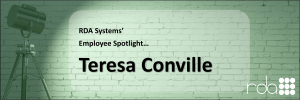For school districts and local governments, every dollar counts. Tight budgets, growing demands for efficient services, and the pressure to modernize can make technology investments seem daunting. Yet, when approached strategically, these investments have the potential to not only meet operational needs but also generate significant cost savings over time.
Consider the example of Vicksburg Warren School District of Mississippi, which reduced operational costs and streamlined network management by transitioning to a cloud-based infrastructure. Stories like this prove that technology isn’t just a necessary expense—it’s an opportunity to improve efficiency and future-proof operations.
In this guide, we’ll explore why strategic technology investments are critical, highlight real-world examples of success, and provide actionable strategies to help school districts and local governments maximize efficiency while cutting costs. With the right approach, technology can become a powerful tool for long-term growth and sustainability.
Why Technology Investment is a Strategic Necessity
For many school districts and local governments, technology budgets often feel like a financial burden rather than an opportunity. However, strategic IT investments can do more than keep operations afloat—they can drive long-term cost savings and operational efficiencies. As Wade Grant, (Director of Educational Technology at Vicksburg Warren School District), aptly puts it, technology spending “is like a big salami, and we’re always looking to shave off another slice.” With strategic investments to improve efficiency and reduce operational expenses, “all those little slices add up to something much bigger over time.”
Instead of taking a reactionary approach to budget cuts, leaders in these sectors benefit from embracing a long-term vision. Grant’s district, for example, demonstrated how moving to cloud-based network management not only modernized their infrastructure but also significantly reduced operational costs. This forward-thinking approach underscores an essential lesson: viewing technology investments as an enabler of efficiency and growth, rather than just a line item, opens the door to impactful changes.
Experts also emphasize that aligning technology spending with clearly defined goals can deliver meaningful results. Whether it’s optimizing administrative processes or streamlining infrastructure management, the potential for savings goes beyond the immediate budget cycle.
Real-World Examples of Strategic Investments
Example 1: Vicksburg Warren School District’s Cloud Migration
As highlighted in EdTech Magazine’s article “Amid Tight Budgets, Districts Are Using IT Investments to Boost the Bottom Line,” Vicksburg Warren School District took a bold step by transitioning their entire network infrastructure to a cloud solution. This shift allowed them to manage the network remotely more efficiently and reduced ongoing operational costs.
“Whether you’re in Timbuktu or Kalamazoo, you’re sitting there managing the network remotely,” Grant explained, showcasing how the cloud-based system enhances flexibility. The migration enabled the district to manage access points, camera systems, and other infrastructure in ways that saved money by improving control and reducing energy consumption. This example illustrates how cloud solutions can yield significant long-term savings by optimizing resource use.
Example 2: Investing in Efficient Back-Office Systems
Another key area for cost savings is back-office operations. Many school districts still rely on outdated systems for tasks like grade maintenance and student information management. These processes are often labor-intensive and prone to inefficiency. By investing in modern systems that automate these tasks, districts and local governments can maximize efficiency, reducing administrative burdens and achieving measurable savings.
As Joseph McLaughlin, (an expert in education technology), noted, “If technology can make those processes more efficient, then there’s an actual bottom-line impact.” For entities looking to save costs while improving administrative workflows, updating back-office systems is an essential step.
Example 3: Digital Controls for HVAC Systems
Beyond IT, technology investments in infrastructure can also yield impressive savings. For instance, Vicksburg Warren School District implemented digital controls for HVAC operations, reducing energy costs and improving environmental sustainability. These types of targeted investments often pay for themselves over time by reducing operational expenses in traditionally high-cost areas.
Strategies for Future-Proofing Technology Investments
Future-proofing technology is more than a buzzword—it’s a necessity for organizations that want to maximize the longevity and impact of their investments. By adopting strategic practices, school districts and local governments can ensure their technology choices remain relevant and cost-effective over time. Key insights from CIO.com’s article “Balancing Innovation with Value, Cost, and Practicality” highlight actionable strategies for achieving this goal.
1. Evaluate True Costs Beyond the Price Tag
It’s easy to focus solely on the upfront cost of technology, but the total cost of ownership tells the real story. This includes direct costs like licensing and training, as well as indirect costs such as maintenance and transition periods. For example, transitioning to a cloud-based system like Vicksburg Warren School District’s network infrastructure involves an initial investment but delivers substantial savings over time through reduced energy and maintenance expenses.
2. Build Cross-Functional Teams
Effective technology decisions require collaboration across departments. CIOs and decision-makers can benefit from including representatives from IT, finance, and operational units to ensure that investments align with organizational goals and address practical needs.
3. Prioritize Flexibility and Integration
Scalable and modular solutions are essential for futureproofing. As organizational needs evolve, interoperable systems allow for seamless updates and expansions without the costly overhaul of legacy systems. This approach also helps avoid the accumulation of technical debt—outdated systems that hinder progress.
4. Use Proof-of-Concept Pilots
Launching pilot projects for high priority use cases can reduce risk and provide valuable insights before committing to a full-scale implementation. By testing in controlled environments, organizations can adapt and refine their strategies for maximum efficiency.
5. Continuously Optimize the Technology Portfolio
A cluttered technology landscape can drain resources and hinder innovation. Regularly reviewing and streamlining systems ensures that investments remain aligned with current needs and frees up resources for future initiatives.
Tips for Schools and Local Governments
Practical advice tailored to the unique challenges of local governments and school districts is essential for effective technology investment. The following strategies can guide decision-makers:
1. Conduct Regular Technology Audits
Routine evaluations of existing systems, costs, and contracts help identify inefficiencies and areas for improvement. These audits enable decision-makers to prioritize upgrades that will have the most significant impact.
2. Invest in Scalable Solutions
Solutions that grow with your organization ensure long-term value. For example, cloud-based systems like those used by Vicksburg Warren School District provide flexibility and adaptability to meet evolving needs.
3. Modernize Legacy Systems
Outdated infrastructure often leads to higher maintenance costs and reduced efficiency—so it’s no wonder that technology modernization takes the number one spot on the list of priorities, according to Gartner’s report CIO Agenda Insights for State and Local Governments. Upgrading to modern systems can integrate seamlessly with new technologies, improving overall operations while reducing costs.
4. Embrace Digital Transformation
Digital tools streamline service delivery, making operations more efficient and user-friendly. From cloud-based administrative platforms to integrated communication systems, digital transformation is a key driver of both efficiency and cost savings.
Making the Case for Investment
Strategic technology investments don’t just improve efficiency—they create lasting value for the organizations that make them. By aligning investments with long-term goals, school districts and local governments can enhance service delivery, reduce operational costs, and position themselves as leaders in their fields.
Key Takeaways:
- Technology spending should be seen as a strategic enabler of growth rather than just a budget expense.
- Real-world examples, such as Vicksburg Warren School District’s cloud migration and HVAC controls, demonstrate how well-planned investments lead to measurable cost savings.
- Strategies like regular audits, scalable solutions, and modernized systems ensure investments remain relevant and effective.
Ready to transform your operations and achieve lasting efficiency?
At RDA Systems, we specialize in delivering scalable SaaS solutions tailored to the unique needs of local governments and school districts. Let us help you modernize your processes, reduce costs, and enhance service delivery for your community. Contact us today to discover how our expertise can turn your technology investments into a strategic advantage.





